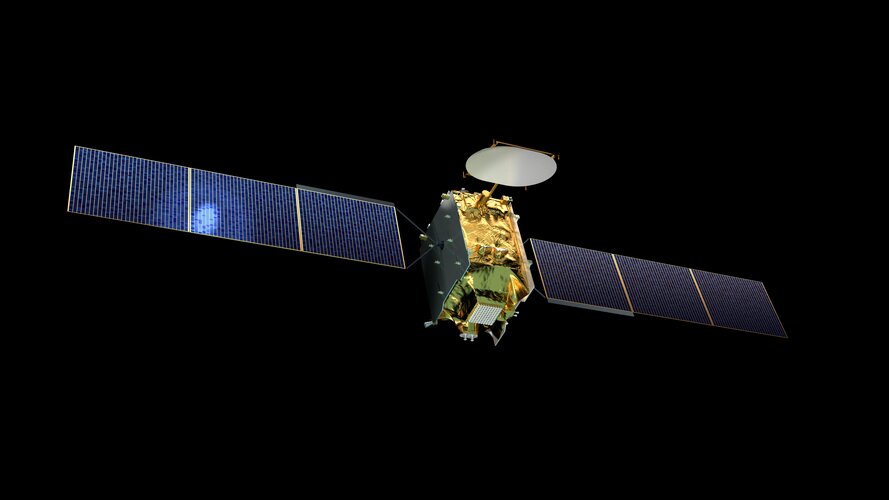Developed under an ESA Partnership Project with satellite operator Eutelsat and prime manufacturer Airbus, Eutelsat Quantum is pioneering a new wave of flexible satellites developed with the European space industry.
The satellite was launched on 30 July on board an Ariane 5 from Europe’s Spaceport in French Guiana and reached its final orbit position a few days later at 48°E covering a wide angle from West Africa to the Strait of Malacca in South East Asia.
Since then, it has been fully end-to-end tested and commissioned, its performance has been verified and its ground operations validated.
The flexible software-defined satellite is now ready to enter commercial service and will provide data and mobile communications for governments and other users through its France-based operator, Eutelsat.
Because it can be reprogrammed in orbit, and at any time, it can respond to changing demands for data transmission and secure communications during its 15-year lifetime.
Its beams can be reshaped and redirected to move in almost real time to provide information to passengers on board moving planes, ships, trucks and cars. The beams also can be easily adjusted to deliver more data when demand surges.
The satellite can detect and characterise any rogue emissions, enabling it to respond dynamically to any accidental interference or intentional jamming.
Eutelsat Quantum is a UK flagship project with most of the satellite developed and manufactured by British industry. Airbus was the prime contractor and was responsible for building the satellite’s innovative payload, while Surrey Satellite Technology Ltd manufactured the new platform. The innovative phase array antenna was developed by Airbus in Spain.
ESA Partnership Projects federate the European space industry around large-scale programmes, achieving competitive leaps forward and related economic impacts.



